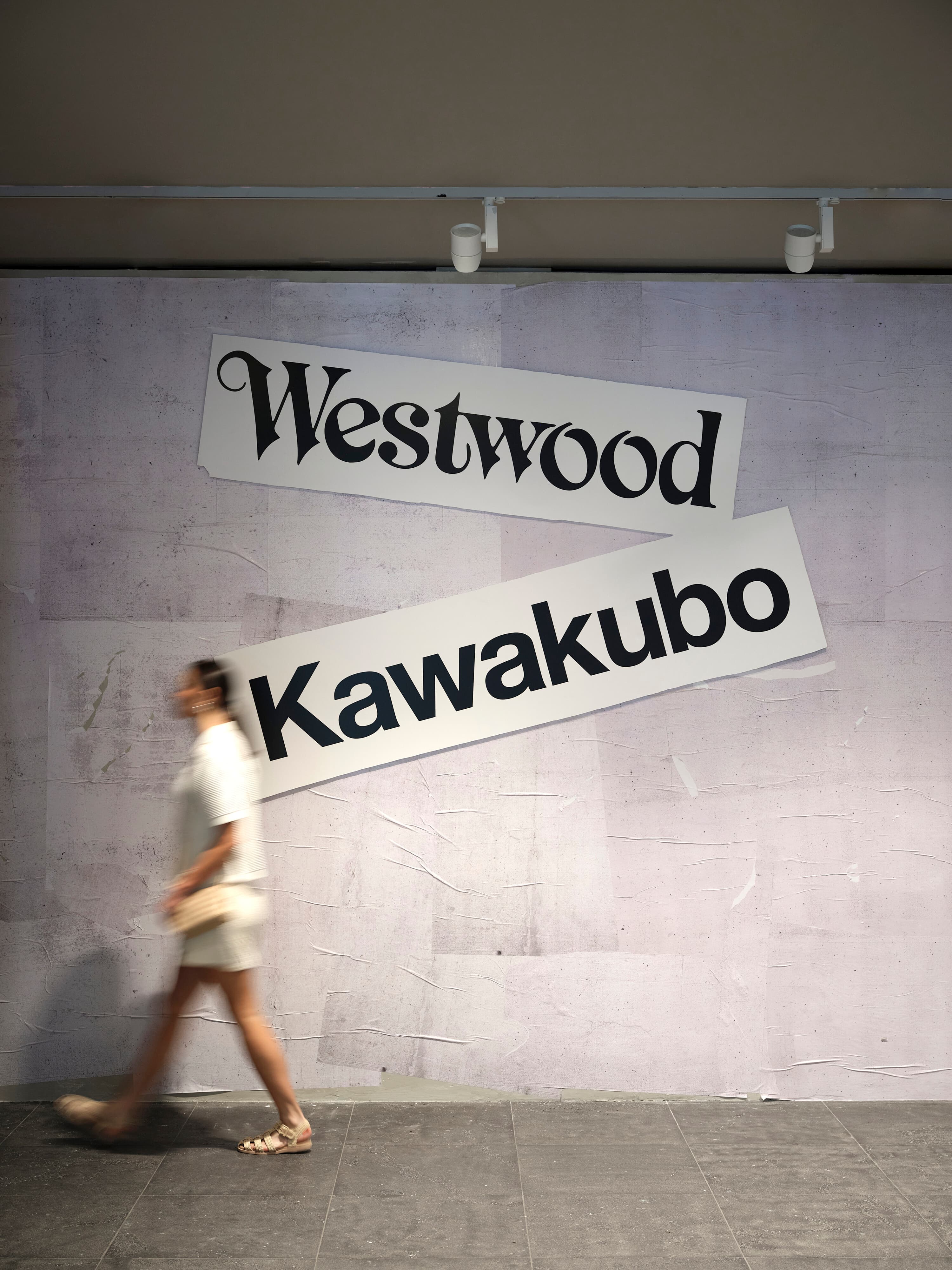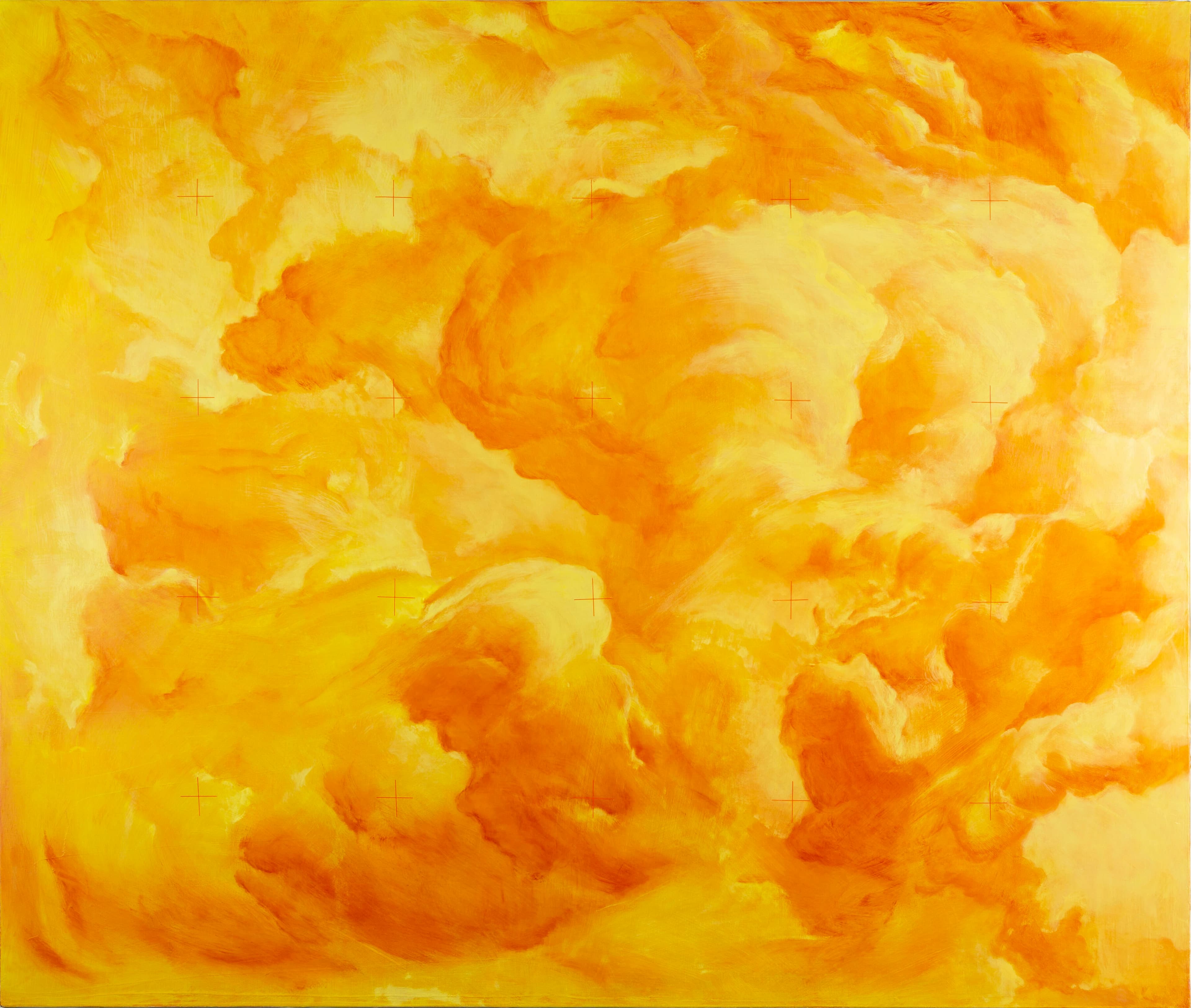Rosslynd Piggott, Realm–peripheral scenes
Philip Brophy
Decorative art. In the critical domain, the term implies an insult, as if to be “merely decorative” is the lowest of aspirations, the simplest of conveyances. Apart from being sardonically attacked by Dadaists and salaciously detourned by Surrealists, the practice has been radically recouped by predominantly queer strategies for at least three decades. But even such Rad Deco clearly fucks with craft and bastardises technique, thereby blocking accusations of decorousness. Committed decorative art, on the contrary, cares naught for gendered/feminised/maternalised stances. In place, it accepts the labour of its fruits and is content to withdraw into optical hermeneutics and sensorial stylistics. By choosing to unradically pursue aesthetic inquiry, decorative artmaking reroutes its historical dismissal by modernist and avant-garde polemics. In one sense, this will always be viewed as reactionary, due to its choice of passive/background/design priorities over active/foreground/concept stratagems. Yet trotting out these stultifying binaries here does a disservice to decorative art’s capacity to speak with its own vocabularies, and forward non-polemical notions of visuality.
Rosslynd Piggott’s new suite of paintings Realm-peripheral scenes (2021–23) is an exemplar of this position. The works collectively give pause to consider not only her command of decorative operations to service her distinctive mode of “sensing” but also how her work stands opposite to the suffocating “hyper-decoreality” that popular contemporary art deliriously inflicts upon its audience (more on this later). Piggott’s practice has over decades explored objects, images, tokens, fragrances, materials, flora, atmospheres, transparencies, and environments that heighten sensorial awareness and advocate a quiet rapture of auras. Through aggregation and accretion, her oeuvre has constructed a cabinet of beautiful things that solicit curious feelings: everything is always notably beautiful, saliently designed, and deliberately poetic. To some degree, this fetishises delicacy, evanescence, and subtlety—aligning it with a Victorian nineteenth-century poetics of sensitivity—but over time, her paintings especially evidence a visuality far removed from the dilettantish wallowing in gorgeousness to which most self-declared aesthetes cling. As her exhibition at Sutton Gallery proves, the result is a distinctive meld of discursiveness and intoxication.

Some general observations can clarify the purpose of the suite. All seven paintings are abstractions of pale, bleached, and razed pastorals, presenting the viewer with what truly are “whiter shades of pale.” Each canvas—all of which evoke widescreen landscapes—insinuates an overwhelming blankness, appearing to be essentially minimalist with hints of hues trapped beneath its porcellaneous whiteness. The cold fluorescents of a white-walled gallery are figuratively reflected back onto the canvasses, as if their nothingness mirrors the mythical neutrality of the white cube. Of course, this is misleading: the paintings bear complex internal relationships between the faintest of tonal presences. Simply described, it is as if the paintings are indeed blank, set to capture the slightest prismatic rainbow from a ghostly, French amethyst prism. Even then, one is likely to doubt the presence of these sporadic, multi-coloured bands: the canvasses are so whitened, any pastel upon their surface feels like an optical illusion. Is the content of this painting seared into its surface by paint, or captured there by light? It takes some time to register this, making the experience of viewing the works an aptly reflective one.
Moving around the space multiple times, one can then distinguish the individual character of each work. They range from the smaller works (Prism veil and multiplied window, 2021–22; Tonal day and graduated cloud veil, 2022–23) to the grand yet subtle panoramic triptych, Pink wave, prism flicker, descending peonies (2021–22). Some paintings have large mists of cameo, celeste, lavender, tea, and tiffany, selectively shading sectors and cross-fading into each other, while retaining the impression that the painting is largely a white affair. The phenomenological aspect of the install is undeniable. For art history adepts, being in the space might be akin to standing in front of, or within, the Light and Space paintings or walls of Mary Course, Helen Pashigan, Craig Kauffman, John McCracken, and James Turrell. The connection makes sense, for decorative artisans and conceptual minimalists equally explored how the painted, primed, textured, or illuminated surface can on its own absorb the viewer into its field of interiority.
Yet Piggott’s aesthetics do not venture West: they gaze toward the sun empire of Japan. Her choice of clouds, light, windows, and flowers is aligned to a long history of visuality specific to Japanese figuration and decoration. The clear antecedent is the Rimpa School, which originates in the latter seventeenth century and carries through to push a counter-Occidental line for nineteenth-century Nihonga painting. Think fusuma sliding doors and byobu folding screens, decorated with beautifully orchestrated “gestures” of flora and fauna, complexly articulated by brushwork closer to embroidery than splattering, all combined into dramatic spatial rhythms for widescreen panoramas of seasonal sensations of captured fleeting moments. Along with Piggott’s series of precursive white paintings for her survey exhibition at the Ian Potter Centre: NGV Australia in 2019, I sense you, but I cannot see you, the works currently at Sutton Gallery are indubitably Nihon-esque.

This is not the place to pontificate how nearly any instance of Japanese visuality over the preceding five centuries can destabilise the categorical binaries engineered and maintained by Western Eurocentric art history discourses. Yet it must be noted how Western artists continue to intuitively respond to Japanese visuality—its fluxional collapse of representation into abstraction, its ideogrammatic base, its embrace of invisibility, its refutation of mimetic dictates. Piggott has herself maintained interests in and connections to Japan, arguably falling in the Kyoto currents of refined design aesthetics, rather than the sprawling Tokyo delta of noisy meta-Pop (which covers everything from Taro Okamoto’s post-war revival of Jomon iconography, to Takeshi Murakami’s “Super Flat” manifesto of otaku iconography). Piggott’s current suite of paintings might have the faintest traces of kawaii pastels (Hello Kitty and Sailor Moon meets Mariko Mori’s LED constructions) but they prioritise poetics over parody. Despite this transcultural borrowing and inspiration, the Sutton Gallery exhibition frames how Piggott has been able to transmute obvious impressions and readings (the plight of most artists who partake of Japan residencies or Jetstar deals) into a centred, serious, and ultimately insightful observance of how sight, colour, and tonality can be managed as an atmospheric concurrence.
The point of addressing Piggott’s painterly suite here is not only to commend her material control and sensorial focus, but also to position her paintings within the currency of decorative art. Yes, politicised art occupies most contemporary art discourse. But despite that narrow field’s gulping of critical oxygen, the visual ecosphere is choking with decoration. Has there been a recent acquisition by any major museum that does not present to its audience a grandstanding, show-stopping display of what amounts to interior room design that is only one step away from a Design Boom-lauded shop fit-out that would have likely been inspired by visiting Omotesando boutiques? A single giant object. A room of three thousand identical objects. Anything made of sugar, salt, dirt, or flowers. Granted that maybe this trend in the upscaled reappraisal of objects and materials as immersive installations marks an investigation into commodity auras and consumptive industrialisation, but their appreciation is largely a matter of impressive decoration that frees the viewer from intellectual engagement. Which is fine: if that’s the kind of populism people want from museum-swagger art, so be it.

The downside is the critical vacuum created by these large, ambitious, and supposedly commendable artworks. Overtly tagged with de rigueur activist/reparationist/anti-globalist sentiment, they can readily be sound-bitten by the media while allowing the artists to stroke the hand that monetarily feeds their production. This is the state of “hyper-decoreality” which elevates decorative art purely through the commissioning conditions of product-design, industrial-fabrication, out-sourcing, craft-hawking, and strategic-prettification. What could be more Victorian than declaring that you like “beautiful things?” And what could be more numbing than art that prompts one to make such a declaration? I prefer to argue—thinly, shakily, unconvincingly—that Piggott’s recent paintings offer an opportunity to move past prettification and aesthete-fluffing, toward something that returns looking, reading, and experiencing to the depths of the “merely decorative.”
Philip Brophy writes on art among other things.


